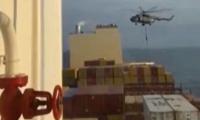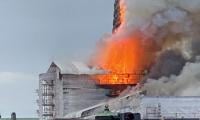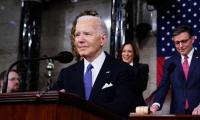LAHORE: A highly driven automotive sector can speed up a country’s economy by leaps and bound, keeping it strong, sustainable, and self-sufficient, but it takes a lot more than just investment to keep the wheels of this industry moving. To have a deeper insight about the sector’s current standing, problems, future growth and other issues, The News talked with Nabeel Hashmi, the former chairman of Pakistan Association of Automotive Parts & Accessories Manufacturers (PAAPAM).
Q: What drives your optimism?
Hashmi: For the first time in last two decades some serious investors have entered Pakistani market. Earlier three Japanese brands dominated the scene with each enjoying a niche market so there was no competition. Nishat Group and Lucky Group, the two wealthiest parties in the country, are among the new entrants. The investments, made by them so far, show they are committed and would not back out like earlier investors. They have their reputation at stake, forcing them to deliver like they did in other sectors of the economy. Then France’s Renault is also coming besides few Chinese firms. For the first time Pakistani consumers would have the choice to choose non-Japanese brands as well.
Q: What other factors are relevant here?
Hashmi: Another positive factor is that with a population of 210 million, 60 percent of which is below 35 years, the country offers tremendous opportunities in the field of car manufacturing. There is a huge demand for better quality small cars as millions of motorcyclists want to graduate from two-wheelers to four-wheelers. Unfortunately there was only one brand in small car segment that was producing a model that is over 30 years’ old. That manufacturer is coming up with a better and efficient variant in small car segment and some new entrants are also planning to introduce below 800 cc cars. The competition would be good for the consumers and industry as well. The high-end car segment would face even tougher competition from existing brands that will check the prices.
Q: What is the current size of the auto industry in Pakistan?
Hashmi: As far as the investment in this sector is concerned it is above Rs370 billion – most of it made by auto-parts manufacturers. The industry cumulatively contributes Rs110 billion annually in the national exchequer. In 2017 the auto industry produced 266,000 vehicles in passenger car segment, besides importing over 60000 used cars, mostly in the small car segment.
Q: Will the influx of refurbished cars from abroad continue to rise?
Hashmi: The imports would reduce once upgraded smaller cars start coming out of local assembly lines.
Q: How do you see the two-wheeler and three-wheeler market?
Hashmi: Pakistan took a giant leap in motorcycles and three wheelers’ manufacturing from around 2 million units in 2016 to 2.6 million units in 12 months of 2017.
Q: What is your take on the tractor and truck making industry?
Hashmi: After a long time the tractor industry is again on recovery path passing the 50000 units barrier after seven years. There was a record production of trucks being 7700 last year while 1100 buses were produced.
Q: In Pakistan, skeptics say, vehicles are not manufactured but rather assembled from imported parts. How do you respond to that?
Hashmi: They are misinformed. The automakers are in fact forced to localise parts for their vehicles for economic reasons. The components of same global standard as made in principal countries are produced in Pakistan at 20 percent less price. Beside, the local parts save the assemblers the high cost of maintaining stocks for three months. From Pakistani vendors they can get supplies within three days. This is the reason localisation for auto parts has rapidly increased at the behest of manufacturers.
Q: What is the status of this localisation at the moment?
Hashmi: Currently, the localisation level for cars and light commercial vehicles has reached up to 75 percent. The new entrants are of course expected to achieve this level gradually in three years. For tractors, it stands at 96 percent and this high level is the main deterrent for tractor importers ever at zero import duty. The motorcycle industry has also achieved 96 percent localisation, and a multinational company procures over 98 percent of components for a leading motorcycle brand locally.
Q: What is the auto sector’s contribution in terms of job creation?
Hashmi: Let me inform you that 90 percent of the employment of 500,000 workers in auto industry is provided by Paapam members.
Q: Tell us about Pakistan Auto Show 2018?
Hashmi: This show is organised every year alternately in Karachi and Lahore. This year it is Lahore’s turn. This will be the largest ever auto show ever held in Pakistan as stalls would be spread over an area of 58000 square meters. Total exhibitors this year are 203 out of which 125 are from Pakistan and 78 from other countries. International exhibitors from Japan, China, United States, Turkey, Thailand, UAE, Germany, Taiwan, Sri Lanka, England, and France will attend the event.
This initiative enables them to earn a dignified livelihood for their families
The event will host more than 700 booths, including leading global and Pakistani tech giants
Gold rates increased by $8 to all-time high rates of $2,371 per ounce in the international market
Strong retail sales prompted economists at Goldman Sachs to boost their gross domestic product
The IMF dictates its terms based on our past performance
Goldman's profit rose 28 percent to $4.13 billion, or $11.58 per share, in the first quarter







